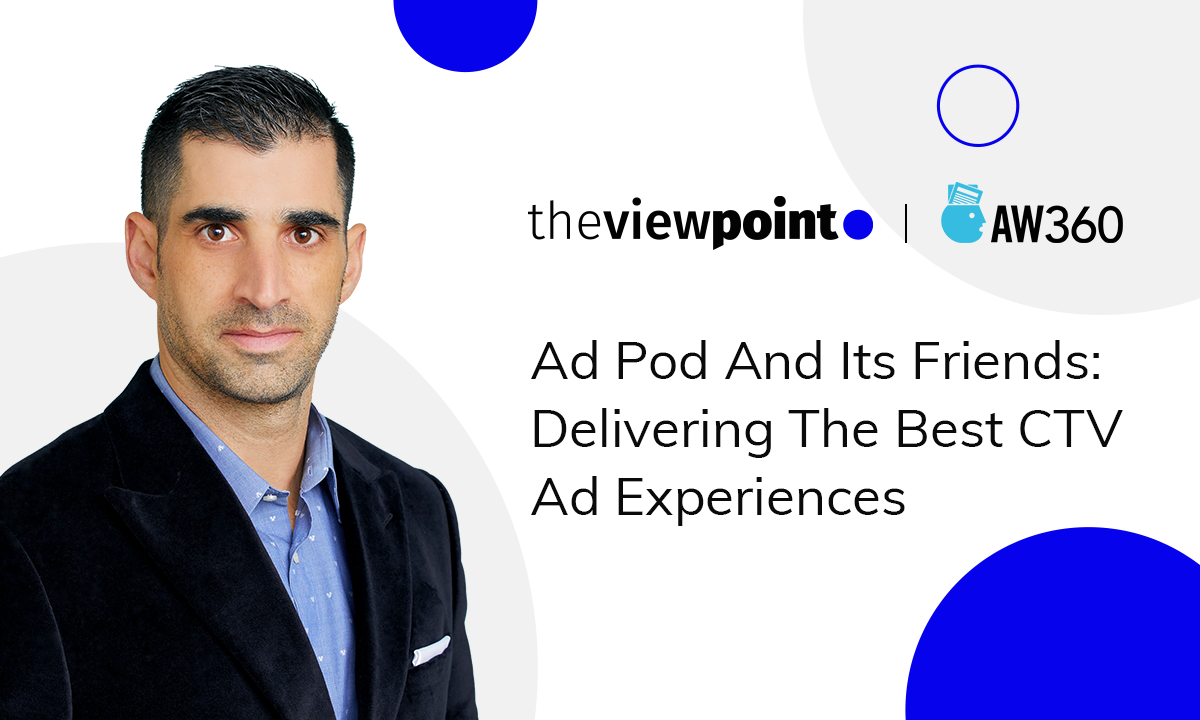
Data Management Platforms: What Are They Used For and When?
There’s no denying that we live in a world where data is king. More data generated by consumers means more opportunities for businesses. Every action taken by a customer online is recorded and can then be utilized to improve marketing, achieve higher engagement and generally get more for your budget. But pure, unprocessed data is virtually useless – it needs to be organized and analyzed to deliver valuable insights. This is what DMPs (or data management platforms) are used for.
What Is a Data Management Platform (DMP)?
So what is a DMP? A data management platform, or DMP, is software designed to collect, store, and organize data from a variety of sources including mobile apps, browsers, websites, and CTV apps. This allows businesses to automate this otherwise routine task. On top of that, DMPs can analyze the collected data and provide insights, grant access to external data, and connect with third-party ad exchanges and networks where targeted DMP advertising purchases can be made.
The three types of data DMPs can collect are first-party, second-party and third-party data.
First-Party Data
First-party data is collected straight from the company’s user or customer. It is deemed the most valuable type of data, considering that the publisher/advertiser has a direct relationship with that party (there already has been engagement and interaction with the user). Email addresses, behavioral patterns, demographics, history of purchases are all examples of this kind of data. First-party data is gathered via direct interaction and forms or sign-ups, but often also via device IDs and pixel tracking.
Second-Party Data
Second-party data is not much different from first-party data – in the sense that it is also gathered through direct interaction and pixel tracking. The difference lies in the fact that it was a different party that collected it in the first place.
Second-party data is exchanged between partner companies that have relevant agreements. DMPs are also used for the actual exchange of this data.
In most cases, first-party data on its own is not enough to run a demand management platform properly, which is why second-party data is sought after to supplement first-party data. As a result, more audience profiles can be built, allowing a company to gain useful insights even at early stages with a small customer base.
Third-Party Data
Third-party data is specifically collected from a wide range of sources by the so-called large data aggregators, who then make it available for sale. It is gathered by purchasing first-party data from publishers, among other data owners, putting it into data packages and selling it through data management platforms.
At the same time, there are notable ethical concerns with this type of data, as customers are often unaware that their private data can be shared beyond the company they directly interact with. But marketers are mostly happy to make use of third-party data to supplement their existing database and add greater precision to their customer targeting profiles.
How Do DMPs Work?
Data Organization
The logic behind this solution, a data management platform, DMP, is to first collect data – including geographic and demographic attributes, mobile app identifiers, online behavioral patterns, cookie IDs, and interests, among others.
This is done through integration with other Ad Tech and Mar Tech platforms (either server to server or via API). These could be DSPs (demand-side platforms), SSPs (supply-side platforms), ad exchange platforms, CRMs (customer relationship management systems), or by adding a tag (HTML pixel or JavaScript snippet) to an app. However, this collected data can’t be used immediately – it needs to be organized into a common format – a process known as data normalization.
Normalized data removes useless and redundant details, ensuring every data record is laid out in the same way to its fellows. Data quality enrichment comes next – adding more data points such as location, device type, browser type and version, and OS (operating system of the device).
There are two key benefits to data normalization and enrichment:
differing data sets are organized into a single format;
data value and quality are improved.
During these two stages, each data record is assigned a unique ID and different attributes, which is important for the segmentation stage.
Data Segmentation
When all three types of data are organized in a DMP, they undergo “data segmentation”. Each snippet of user data is processed and then attributed to a different category, which allows for the building of distinct user profiles.
For instance, one store may choose to target a specific ad to males over 50, while another may work for females exhibiting particular behavioral patterns. No matter who the intended audience is, marketing experts, advertisers and publishers rely on segmentation to get the most out of their campaigns, as well as the greatest degree of exposure to their target consumers.
Profile Building
Profile building is another important part of a DMP’s data collection. This is when the collected data is transformed into profiles and events, which are the basis for audience segmentation.
It is also at this stage that data sets are matched using common identifiers – for example, a telephone number in a CRM system, which may be identical to one entered into a sign-up form that was later picked up by a marketing-automation platform. This process eliminates duplicate profile entries by merging all correlated events and attributes into a single profile.
Audience Creation
For the purpose of a DMP, an audience is a group of user profiles sharing common user identifiers.
An advertiser may have an audience in the DMP called “Apple users over 40 in Germany”. This audience would consist of profiles with attributes “device = iPhone”, “age >40”, and “country = Germany”.
Audience creation is easily the most important feature of a DMP, and is crucial for the next step – data activation.
Data Activation
The last step involves activating data – in order words, putting the data to work. Activation depends on the DMP having functional integrations and open APIs with other platforms to ensure that the processed and segmented audiences can be easily sent from DMP to SSPs, DSPs, and beyond. One of the most common uses of a DMP is to run a targeted campaign to a chosen audience using a DSP. A DMP can also be linked with your CMS to facilitate adjustments to content for specific audience groups. DMPs offer numerous use cases for data activation.
Who Can Benefit from Using a Data Management Platform?
There are three main groups that can benefit from using a DMP: marketers, publishers, and agencies.
Publishers (or media owners) are those who own and have control of mobile or CTV apps, and websites. They use DMPs to manage data about their audience collected across their properties, and the ad campaigns run on them. A DMP allows publishers to collect first-party audience data and get hold of additional insights, which in turn increase CPMs for inventory, both programmatic and sold directly.
On the other hand, for marketers and agencies, data management platforms serve to distinguish audiences at a deeper level and acquire additional information about their audience, without regard for the source of the data. By collecting this data about your most valuable customers, marketers can single out and target prospective clients with the same profile, thus allowing you to expand your audience base. Data management platform audiences are then targeted with high-performing digital marketing campaigns, ensuring businesses reach their audience wherever they may be and whatever device they may be using.
How to Use DMPs for CTV?
Improving Targeting for Online Media Campaigns
In the CTV field, DMPs are primarily used to help advertisers get the most out of their online media campaigns.
To improve targeting, advertisers can use the audiences created in their DMP during the purchase of impressions on CTV apps through DSPs. The information in the data management platform includes behavioral data, which is not a part of the bid request. This means that targeting can be significantly improved.
Audience Extension
Audience extension is used by advertisers to reach publisher audiences across numerous CTV apps. This allows publishers to maximize revenue from their audience without investing more into increased inventory (ad space).
Addressable TV advertising allows showing different ads to different households even if they are watching the same program. Thus addressable advertising enables advertisers to abandon traditional one-fits-all TV ad buys, and focus on the delivery of relevant and impactful campaigns. Currently, the most popular format is inseam video (pre-roll, mid-roll, and post-roll). These are served in an unlimited number of apps and streaming services, including live broadcasts, but also video on demand.
By using DMPs, publishers can create audiences which can then be fed to SSPs and DSPs. Advertisers then target these very audiences via DSPs.
What Don’t DMPs Do?
DMPs share some functions with other MarTech, like data analytics platforms, DSPs and customer data platforms. But there are some notable differences.
DMPs are not designed to perform the same level of analysis as dedicated data analytics platforms because only a certain kind of data is gathered, and they can only analyze ad performance on digital channels.
Data management platforms also do not operate ad campaigns themselves. They are meant to connect with a DSP, SSP or other media platforms that do the actual ad serving. Often, DMPs are a part of technological solutions, such as AdTech platforms, media ecosystems or marketing cloud platforms, and are merely a component of a larger whole.
Limitations of Working with a DMP
Despite the numerous advantages of using a DMP, there are certain factors that need to be taken into account when deciding between data analysis options.
Longer Processing times
Because of the level of analysis, DMPs can take longer to process the ingested data and then analyze it. CDPs show data in real time, DMPs don’t.
“Data-Hungry”
First-party data alone is not enough for a DMP. You will have to resort to buying external data to make it effective.
Short Data Retention
As DMP data relies on cookies, data retention rarely exceeds 90 days.
No Personalized Marketing Capabilities
While customer profiles seem highly accurate, they are still based on attributes as opposed to individual identities. You can take full advantage of customer profiles and reach relevant audiences, but there is no way of running or managing targeted ads to individual customers using a DMP.
Takeaways
In recent years, data management platforms have become an important part of online advertising. But data management platforms will not necessarily tick all the boxes for all marketers. They need to make sure they are fully aware of the capabilities, advantages and drawbacks of DMPs before investing in one.
To unleash the full potential of this tool, marketers will need to become familiar with its features and then implement and fine-tune the DMP across the business, as well as ensure that they have the quantity and quality of data to acquire meaningful insights.
Related
Programmatic TV Tax Day is Not Just April 15. It's Every Day
This blog examines the significant "AdTech tax" in Connected TV advertising, advocating for Tatari's direct integration with publishers to bypass hidden fees, resulting in substantial cost savings and enhanced transparency.
Read more
Ad Pod And its Friends: Delivering the Best CTV Ad Experiences
Aiming to stand out from the crowd and surpass consumers’ expectations, CTV advertisers have to be allied with publishers and very savvy at applying innovative advertising techniques, like frequency capping, competitive ad separation, and deduplication. Though still raising a lot of eyebrows, these tools have already become the next big thing in the advertising world. So, before diving deep into the details of ad pod management, let’s take a sneak peek behind the scenes of modern CTV play.
Read more
Everything You Need to Know About Real-Time Bidding
As programmatic advertising is gaining momentum, RTB or real-time bidding comes in. In fact, most platforms in ad tech today are RTB enabled. But what does that actually mean? What is an RTB platform and why is it so important for digital marketers? Let’s get the answers to these questions and more.
Read more


